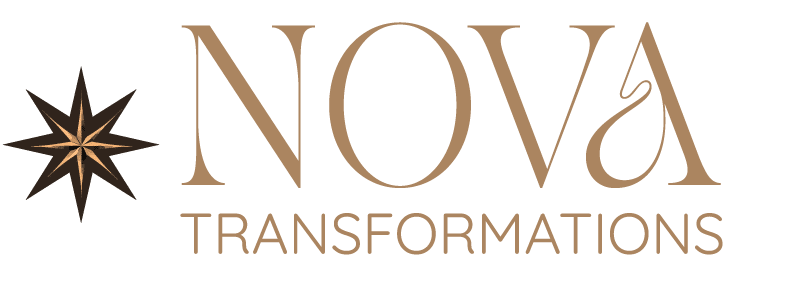The Impact of Opioid Addiction
Opioid Use Disorder Statistics
Opioid addiction, also referred to as opioid use disorder (OUD), is a significant public health crisis in the United States. In 2022, an estimated 6.1 million people were affected by OUD, highlighting the extensive reach of this condition across various demographics. Understanding these statistics provides a clearer picture of why addressing opioid addiction is essential for individuals and communities alike.
Here is a summary of key statistics related to opioid use disorder:
| Statistic | Value |
|---|---|
| Estimated number of individuals with OUD | 6.1 million |
| Percentage of opioid-related overdose deaths | Approximately 70% of all drug overdose deaths |
| Recovery success rates with treatment | Varies; individualized approaches greatly increase chances of success |
Importance of Seeking Treatment
Recognizing the need for treatment is a crucial step for you or a loved one struggling with opioid addiction. OUD is a chronic disease that is treatable, and effective treatment options are available. Early intervention can lead to better outcomes and a higher likelihood of recovery. Seeking help can save lives and assist individuals in regaining control of their lives.
The goal of opioid addiction treatment is not just to eliminate drug use but to restore productive functioning in family, workplace, and community settings. Engaging with an opioid addiction program can significantly enhance the chances of successful recovery.
Evidence-based treatment approaches, such as medications for opioid use disorder (MOUD) combined with behavioral therapy, have been shown to be particularly effective (CDC). This integration not only helps alleviate withdrawal symptoms but also addresses the emotional and psychological aspects of addiction.
If you or someone you know is facing challenges with substance use, do not hesitate to reach out for assistance. It’s essential to explore available resources like fentanyl addiction programs or heroin addiction recovery options that focus on comprehensive care. Additionally, understanding the support systems in place, like peer support rehab and family support therapy for addiction, can be vital to the recovery journey.
Understanding Medications for Opioid Use Disorder
Overview of Medication Options
When considering an opioid addiction program, understanding the medication options available is essential for effective treatment. Medications for Opioid Use Disorder (MOUD) include methadone, buprenorphine, naltrexone, and lofexidine. These medications interact with the brain’s opioid receptors without causing the euphoric effects associated with opioids. This helps individuals regain a sense of balance in their lives during recovery.
| Medication | Description | Accessibility |
|---|---|---|
| Methadone | Long-standing treatment for opioid use disorder, requires approved programs. | Available only through approved programs in the U.S. |
| Buprenorphine | Can be prescribed by certified doctors and even through telehealth services. | More accessible than methadone. |
| Naltrexone | Blocks opioid receptors; useful for maintaining recovery. | Available by prescription. |
| Lofexidine | Alleviates withdrawal symptoms but does not act on opioid receptors. | Available by prescription. |
These medications help manage cravings and withdrawal symptoms without producing the intense pleasure associated with opioid misuse (National Institute on Drug Abuse).
Effectiveness of Medications in Recovery
The effectiveness of medications for opioid use disorder can significantly enhance the recovery process. Studies show that medications such as methadone, buprenorphine, and naltrexone can reduce opioid use and other negative health outcomes. These medications not only help individuals avoid the harsh symptoms of withdrawal but also lower the likelihood of relapse.
It’s important to note that adults with severe opioid use disorder were found to be five times more likely to receive MOUD compared to those with mild cases. Treatment accessibility can also play a significant role; individuals receiving substance use treatment via telehealth were approximately 38 times more likely to receive these medications compared to those who did not utilize telehealth services. This highlights the importance of accessible treatment options within your chosen opioid addiction program to maximize recovery success (NIDA).
By incorporating medication into a comprehensive treatment plan, you or a loved one can significantly improve the chances of long-term recovery and wellness. If you or someone you know is struggling with opioid use disorder, it is critical to understand these options and seek an effective opioid addiction program to create a successful path to recovery.
Integrating Behavioral Therapy in Treatment
Effective treatment for opioid use disorder (OUD) goes beyond just medication. Integrating behavioral therapy into your recovery plan can significantly enhance outcomes and support long-term sobriety. At Nova Transformations, we understand the essential role that counseling and psychosocial support play in your journey to recovery.
Complementing Medications with Counseling
Counseling serves as a valuable addition to medications like methadone or buprenorphine, which are commonly employed in an opioid addiction program. During counseling, patients receive comprehensive support tailored to their individual needs. This can include different therapy styles, education on stress management, and referrals to additional resources as needed.
The primary goal of this integration is to address the psychological aspects of addiction that medications alone may not resolve. This holistic approach helps to ensure that you or your loved one receives a well-rounded treatment experience, maximizing the likelihood of successful recovery.
| Type of Therapy | Description |
|---|---|
| Individual Therapy | One-on-one sessions that focus on personal challenges and triggers. |
| Group Therapy | Support and guidance from peers facing similar struggles. |
| Family Therapy | Involves family members to strengthen support systems. |
| Education Sessions | Information on addiction recovery and coping strategies. |
Benefits of Psychosocial Support
Psychosocial support, which includes counseling, offers numerous benefits during your recovery process. This type of support can lead to improved mental health, increased self-efficacy, and a better understanding of addiction’s impact on life. According to the CDC, integrating counseling alongside medication can yield additional positive outcomes for patients undergoing treatment for OUD.
Some notable benefits of incorporating psychosocial support include:
- Enhanced Coping Skills: Learning how to manage stress and triggers effectively.
- Increased Motivation: Support from counselors and group members can foster determination to stay on the path of recovery.
- Improved Relationships: Family therapy sessions can help mend relationships strained by addiction.
- Access to Resources: Counselors can help connect you with external support systems and resources.
Choosing Nova Transformations means prioritizing a comprehensive approach to addiction recovery. Through our programs, you’ll find a combination of medication, behavioral therapy, and psychosocial support, ensuring a pathway to lasting recovery. If you or a loved one is considering counseling options, explore our range of services, including dual diagnosis mental health and addiction and holistic outpatient program, to enhance the treatment experience.
Approaches to Opioid Addiction Treatment
When addressing opioid addiction, utilizing effective treatment strategies is crucial. Two main approaches include evidence-based treatment strategies and personalized recovery plans, both of which are integral to the opioid addiction program.
Evidence-Based Treatment Strategies
Evidence-based approaches to treating opioid use disorder (OUD) emphasize the importance of Medications for Opioid Use Disorder (MOUD) combined with behavioral therapy. Studies show that a recovery plan incorporating medication significantly increases the chances of successful recovery.
Despite the effectiveness of these strategies, less than 20% of individuals with OUD receive the necessary medications for treatment. Factors such as limited availability and barriers to access can hinder patients from receiving the care they need. However, the use of telehealth services has demonstrated potential in increasing patient engagement and improving access to treatments (National Institute on Drug Abuse).
Recent statistics highlight the access disparity in treatment: in 2022, only 25% of U.S. adults who needed OUD treatment received the recommended medications, while 30% received treatment without medications. Notably, treatment uptake varied by racial and ethnic groups and between genders and age ranges (CDC).
| Factor | Percentage of Treatment Recipients |
|---|---|
| Adults needing OUD treatment | 4% |
| Received recommended medications | 25% |
| Treatment without medications | 30% |
Personalized Recovery Plans
Opioid addiction, or OUD, is a chronic disease that can affect anyone. However, it is treatable, and effective treatment options are available for those struggling with it (CDC).
Personalized recovery plans play a vital role in ensuring that treatment is tailored to the individual’s specific needs. Expanding access to effective evidence-based treatments, particularly MOUD, is crucial. These medications have been shown to support individuals with OUD on their path to recovery (CDC).
By adopting a personalized approach, you and your loved ones can receive the most appropriate therapies that address your unique circumstances, enhancing the likelihood of successful recovery. For more information on drug and alcohol treatment programs tailored to your needs, consider exploring options like alcohol addiction treatment, heroin addiction recovery, and fentanyl addiction program.
Supporting Recovery and Wellness
Preventing Overdose Deaths
The first step in maintaining a successful recovery from opioid addiction is effectively preventing overdose deaths. In 2021, nearly 107,000 individuals lost their lives to drug overdoses, with 75% of those fatalities linked to opioids. The alarming rise in these statistics is heavily attributed to the increased availability of illicit fentanyl, a powerful synthetic opioid.
Preventing these tragedies requires targeted interventions that connect individuals to treatment and initiate medications aimed at treating Opioid Use Disorder (OUD). It’s critical to engage in expanded communication about the effectiveness of available medications in reducing both nonfatal and fatal overdoses. Each step taken towards treatment not only aids the individual but impacts their families and communities. For more insight on how to navigate these challenges, consider exploring our resources on prescription drug dependency rehab and other addiction recovery programs.
Providing Holistic Care
Holistic care goes beyond addressing merely the addiction itself; it encompasses the overall well-being of the individual. This approach integrates various therapeutic modalities that cater to the emotional, psychological, and physical aspects of recovery. Cultivating a comprehensive wellness plan can lead to healthier lifestyle choices and sustained sobriety.
- Nutritional Counseling: Attention to nutritional needs supports physical recovery and improves overall health.
- Mindfulness Practices: Techniques such as mindfulness rehab and yoga detox support can help in managing stress and promoting mental clarity.
- Peer Support: Engaging in peer support rehab provides a sense of community and shared experience, further reinforcing the recovery process.
In addition to these options, services like structured therapy addiction recovery are essential for building coping strategies and resilience necessary for long-term success. The holistic approach ensures that as you or your loved one navigates the complexities of recovery, all aspects of health are prioritized, setting a strong foundation for a productive life after addiction.
Choosing the right support and programs can make a significant difference in the recovery journey. If you’re seeking a comprehensive and effective opioid addiction program, consider exploring how Nova Transformations can assist you in achieving sustainable recovery.
Addressing Disparities in Treatment
The journey toward recovery from opioid addiction can be significantly affected by disparities in treatment access. It’s crucial to understand these inequalities to foster a more equitable approach to addiction recovery.
Disparities in Medication Access
Access to medications for opioid use disorder (OUD) is alarmingly low. In 2022, only 25% of adults in need of OUD treatment actually received medications like buprenorphine, methadone, and naltrexone, which are known for their safety and effectiveness in sustaining recovery and preventing overdose deaths (NIDA). This is an acute concern, as research indicates a disparity in treatment across different demographics.
The 2022 statistics show that lower percentages of Black and Hispanic adults received any OUD treatment compared to White adults (CDC). These disparities indicate a critical gap that needs addressing. Effective interventions should focus on increasing medication access among underserved populations to ensure that everyone has a fair chance at recovery.
| Population Group | Percentage Receiving OUD Treatment |
|---|---|
| Overall Adults Needing Treatment | 55.2% |
| Adults Receiving Medications for OUD | 25% |
| Black Adults | Lower than White Adults |
| Hispanic Adults | Lower than White Adults |
Improving Treatment Accessibility
Improving accessibility to opioid addiction treatment is vital for addressing these disparities. Strategies such as telehealth services have shown promise in enhancing patient engagement and satisfaction, allowing for a more convenient way to access care. Telehealth can bridge geographical and economic gaps often faced by individuals seeking help (National Institute on Drug Abuse).
Additionally, creating partnerships with local organizations can help spread awareness of available opioid addiction programs. Awareness campaigns, alongside expanding service availability, can facilitate easier access for those in need, especially in marginalized communities.
Implementing these strategies not only helps in treating opioid addiction but also contributes to the overall wellness of affected individuals. Understanding these disparities is the first step toward building a stronger, more equitable opioid addiction treatment landscape.
For more information about specific treatment modalities, consider our fentanyl addiction program, heroin addiction recovery, and alcohol addiction treatment.








